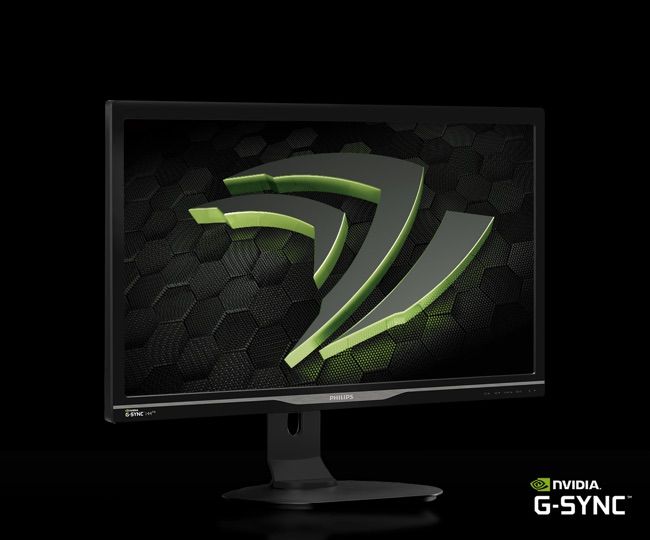Go shopping for a PC display and you'll see ones advertising support for technologies like NVIDIA's G-Sync and AMD's FreeSync. These work in concert with modern NVIDIA and AMD GPUs to provide a smoother image.
These technologies are even making their way to gaming-focused laptops. Which you'll want really just depends on whether you use NVIDIA or AMD graphics hardware, as they're not compatible with each other.
Variable Refresh Rates
Both of these technologies are designed for using a monitor with a variable refresh rate rather than a fixed refresh rate. G-Sync is NVIDIA's solution, while FreeSync is AMD's.
Traditionally, a PC monitor has had a fixed refresh rate, like 60Hz. The display refreshes its image 60 times per second, no matter what. Your PC's graphics card just continues pushing frames to the display at whatever speed it can, which can result in screen tearing -- part of the display showing one frame while another part of the display is showing another frame. This gets worse if your game's frame rate varies a lot.
V-Sync has been a traditional solution for this, but it has a lot of problems of its own. V-Sync eliminates tearing and makes the image smoother, but it introduces delays. Rather than sending a frame that would result in screen tearing, V-Sync holds the next frame for a bit, resulting in a delay. V-Sync tends to introduce noticeable input lag, too.
G-Sync and FreeSync introduce variable refresh rates. If your game is rendering at 40 frames per second, your display will update at 40 frames per second. If it starts rendering at 75 frames per second, your monitor will refresh at 75 frames per second. The monitor and graphics processor talk to each other, and the refresh rate constantly changes to be the ideal one to match the images being sent to the display. This eliminates stuttering, input lag, and screen tearing, resulting in a much more fluid image when playing PC games without the problems of V-Sync.
NVIDIA's G-Sync and AMD's FreeSync
NVIDIA's G-Sync technology was the first solution. This is a proprietary NVIDIA solution -- it requires an NVIDIA graphics processor that supports G-Sync as well as a display that supports G-Sync. Every PC monitor that supports G-Sync includes a proprietary hardware module that talks to the NVIDIA GPU and adjusts the display's settings on the fly.
AMD's FreeSync was the second solution. This is AMD's solution, and it's not proprietary. Instead, it's based on a royalty-free industry standard known as DisplayPort Adaptive-Sync. Displays that support FreeSync don't need a proprietary hardware module, and this makes them a bit cheaper.
There's a bit of a difference in approach here. While a hardware module does the work in NVIDIA's G-Sync solution, AMD's Radeon driver and each display's firmware do the work with FreeSync. NVIDIA argues that AMD's solution may not be able to keep pace. Many people report more problems with "ghosting" on FreeSync displays -- objects leaving behind artifacts as they move on the screen. NVIDIA's solution seems to be preferred to some degree by most, but AMD's could improve and is noticably cheaper. Really, it depends which GPU you have -- NVIDIA or AMD.
How to Get It
If you have an NVIDIA card, you need a display that supports G-Sync to take advantage of this -- NVIDIA could adopt the FreeSync standard, but it hasn't and has no plans to.
If you have an AMD card, you'll need a display that supports FreeSync -- AMD graphics processors can't use G-Sync. Pair an NVIDIA GPU with a FreeSync display or an AMD GPU with a G-Sync display and the display will work, but you won't get the variable refresh rate goodness.
Some gaming laptops now come with G-Sync or FreeSync, indicating their built-in displays are communicating with their internal GPUs and using adaptive refresh rates out of the box.
Intel does plan on adopting the DisplayPort Adaptive-Sync specification in the future, but Intel's graphics hardware doesn't support this right now. But, if you play PC games, you probably don't use an Intel GPU anyway.
If you have an NVIDIA GPU that supports G-Sync or an AMD GPU that supports FreeSync, just look for a display that supports G-Sync or FreeSync -- whichever you need -- while shopping for a new display.
Overall, these solutions are a significant improvement for gaming. They're coming down in price, and you can purchase G-Sync and FreeSync-enabled displays at a variety of price points. Do your own research and look up reviews for the display you're thinking of purchasing to see how well it performs.
Hopefully, this solution will become even more widespread in the longer term -- making its way even to Intel GPUs and less-expensive displays. It's a smarter way to handle refresh rates.
Image Credit: Vernon Chan on Flickr, Vanessaezekowitz on Wikipedia, NVIDIA



